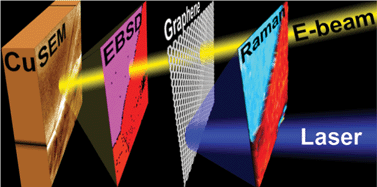Decoupling of CVDgraphene by controlled oxidation of recrystallized Cu†
Abstract
Large-area

* Corresponding authors
a
Research Center for Applied Sciences, Academia Sinica, Taipei, Taiwan
E-mail:
lanceli@gate.sinica.edu.tw
Tel: +886 3 5712121 ext. 59484
b
Department of Engineering and System Science, National Tsing Hua University, Hsinchu, Taiwan
E-mail:
juang@ess.nthu.edu.tw
Fax: +886 3 5720724
Tel: +886 3 5715131 ext. 35804
c
Max Planck Institute for Polymer Research, Ackermannweg 10, Mainz, Germany
E-mail:
hernande@mpip-mainz.mpg.de
Fax: +49 0 6131 379 ext. 100
Tel: +49 0 6131 379 203
Large-area

 Please wait while we load your content...
Something went wrong. Try again?
Please wait while we load your content...
Something went wrong. Try again?
A. Lu, S. Wei, C. Wu, Y. Hernandez, T. Chen, T. Liu, C. Pao, F. Chen, L. Li and Z. Juang, RSC Adv., 2012, 2, 3008 DOI: 10.1039/C2RA01281B
To request permission to reproduce material from this article, please go to the Copyright Clearance Center request page.
If you are an author contributing to an RSC publication, you do not need to request permission provided correct acknowledgement is given.
If you are the author of this article, you do not need to request permission to reproduce figures and diagrams provided correct acknowledgement is given. If you want to reproduce the whole article in a third-party publication (excluding your thesis/dissertation for which permission is not required) please go to the Copyright Clearance Center request page.
Read more about how to correctly acknowledge RSC content.
 Fetching data from CrossRef.
Fetching data from CrossRef.
This may take some time to load.
Loading related content
